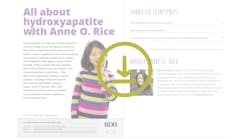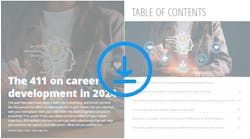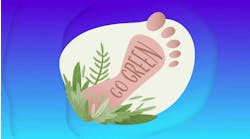If the word “white” in the title of this article made you a little uncomfortable, then I hope you read it. That was me 15 years ago. I might have asked myself “Why all the racial division? Can’t we all just be hygienists?” My curiosity and compassion to understand my community, my colleagues, and my coworkers sent me on a journey of self-discovery and deep transformation. This educational process has included reading books and articles, listening to podcasts, attending conferences, and watching documentaries.
I’m the dental director of a health center in an urban area where my patients and my team continue to inspire me to be a better leader—one who’s intentional about the things I say, the decisions I make, and the policies I support or oppose. I’m sharing what diversity in dentistry means to me, and how white hygienists specifically can best support the goal of a more inclusive and professional environment.
I was first inspired to read and do more about racial injustice when Trayvon Martin, age 17, was murdered. He was killed on my birthday in 2012, walking to the store in his dad’s neighborhood to buy Skittles and a can of sweet tea. It was NBA finals week and he had been watching the games. He reminded me of my own godson, Trelen, and I followed the case very closely.
Everyone has their own reason for wanting to learn more about their role in diversity, but I do believe that if you can lean in to your compassion and curiosity, you too will be forever changed as you educate yourself on what others have experienced and are currently going through.
What is diversity in dentistry?
Diversity is more than race. Diversity goals depend on the group, its history, and a shared vision for the future. Other categories of diversity include gender, language, religion, sexual orientation, or geographical background. There are many differences hygienists can classify themselves within, but regardless of our background, our shared common goal is quality patient care that leads to better health outcomes. Here I focus on the social construct of race as one of many components of diversity, perhaps the most contentious to discuss in the US and one that is correlated to the most dramatic disparities we see in oral health diseases.
When we evaluate race—avoiding color blindness—we can fully see, acknowledge, affirm, and address the disparities that exist in our communities. At first consideration, color blindness may feel fair and comfortable, but if we can’t see and measure color as it is associated with patients' health, we’re missing the opportunity to actually balance the scales. There is no biological susceptibility or immunity to oral diseases based solely on race; however, social and economic inequalities cause predictable and preventable circumstances.1 Fairness comes through truth and targeted resources. It includes acknowledging that hiring providers who look like their patients, or speak the same language, has been shown to increase utilization and trust, thereby improving health access and health outcomes.2 Historical segregation of schools, present-day inequalities in education, and other systemic barriers impacting Black Americans, call us to reject color blindness and contribute to targeted solutions. The census bureau in 2019 shows the racial and ethnic background of dental hygienists.3Black hygienists come in at 4.58% of the workforce, despite making up 13.4% of the US population.3 Recognizing this gap calls us to dig deeper and to ask questions of ourselves, and the institutions and industry leaders we support. In no way should we be putting on capes and creating our own savior complexes, but if we want to contribute to solutions, we must be intentional.
Steps to embracing diversity in dentistry
- Learn. Start your lifelong learning journey by making a commitment to educate yourself. Don’t rely on those around you to spoon-feed you readily available data. Read books and journal articles about race, diversity, and oral health. Watch documentaries and listen to podcasts. There is so much information out there that helped me deepen my understanding and ground me in empathy. Some good ones to start with are below, but there are many lists readily available online for white people interested in learning more about race.
- Teeth: The Story of Beauty, Inequality, and the Struggle for Oral Health in America, by Mary Otto (book)
- Oral Health in America: Removing the Stains of Disparity, by Henrie M. Treadwell, Caswell A. Evans (book)
- Unnatural Causes: Is Inequality Making Us Sick? (a PBS documentary series on social determinants of health)
The Persistence of Oral Health Disparities for African American Children: A Scoping Review, by Dominique H. Como, et al. (journal article)
- Reflect. Learning about race is hard work. It can be emotional, isolating, and discouraging. Race is not just a national issue; global systems and hierarchies have been created around the social structure of race. Take the time to be honest with yourself, dig deep, ask hard questions, and heal from your own life experiences.
- Waking Up White, and Finding Myself in the Story of Race, by Debbie Irving (book)
- Race: The Power of an Illusion, California Newsreel (documentary series)
- Me and White Supremacy: A Guided Journal, by Layla F. Saad (book companion journal)
- Do. Act in your community. This will be different depending on where you live, the patients you serve, and the colleagues in your network. Once we know better, we must do better. This could be contributing to health programs in a marginalized community, encouraging your alma mater to increase their student body diversity, or helping your office recruit and promote hygienists from diverse backgrounds. It also means not expecting hygienists of color to work for free, teach about diversity without proper compensation, or solve large inequalities without the help of white hygienists. How can you leverage your network and resources to increase representation on committees, within faculty positions, or on your own clinical team?
- Make a donation to the National Dental Hygienists’ Association or become a member (https://www.ndhaonline.org/).
- Mentor and encourage hygiene students of different backgrounds.
- When asked to serve as a volunteer leader within professional organizations, recommend someone for that seat you know whose voice is not yet being heard.
References
- Centers for Disease Control and Prevention. Division of Oral Health. Disparities in oral health. February 5, 2021. https://www.cdc.gov/oralhealth/oral_health_disparities/index.htm.
- Wilbur K, Snyder C, Essary AC, Reddy S, Will K, Saxon M. 2020 Developing workforce diversity in the health professions: A social justice perspective. Health Prof Educ. 2020;6(2):222–229. https://doi.org/10.1016/j.hpe.2020.01.002.
- Census Bureau. Dental Hygienists. 2019. Data USA. https://datausa.io/profile/soc/dental-hygienists.
Jennifer Hasch, BS, RDH, is the dental director for a federally qualified health center in Louisville, Kentucky. She is the 2017 recipient of the ADHA community outreach award and KYDHA’s 2018 RDH of the Year. She cofounded a mobile charity clinic in December 2015 for Louisville’s most vulnerable populations; that program has provided over $2 million in free dental services for the community with volunteer clinicians. She believes in collaboration vs. competition and that a person’s legacy is only as large as their love.







